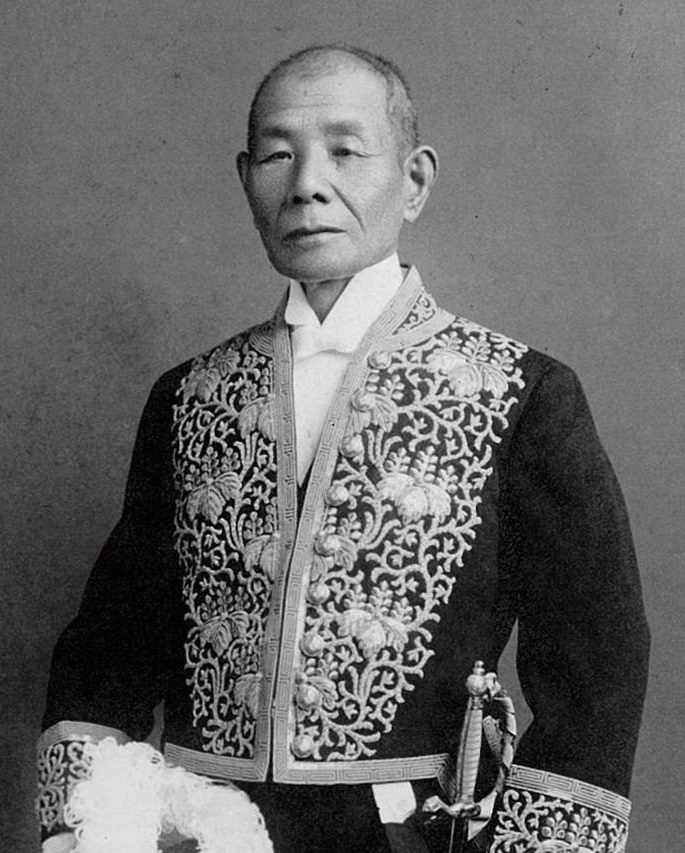ZEN MESTEREK ZEN MASTERS
« Zen főoldal
« vissza a Terebess Online nyitólapjára

村上専精 Murakami Senshō (1851-1929)
Murakami Senshō (村上専精, 1 May 1851 – 31 October 1929) was a Meiji period Buddhist scholar. He famously introduced Western scholarship on Buddhism for Japan, and because of this was forced to resign from Japanese Buddhist priesthood.
His most notable work was 『仏教統一論, (Discourse on Buddhist Unity), which argued that Japanese Mahayana texts were not the true teachings of Buddha. While he had explained this argument before in a history text, this book, written more in the style of polemic, became famous in intellectual circles. It was also called 『大乗非仏説論』 which has been translated simply as "The Theory That Mahayana Is Not the Buddha's Teachings". However, Murakami believed that Mahayana was nonetheless transcendental truth.
http://en.wikipedia.org/wiki/Sensh%C5%8D_Murakami
Murakami Senshō: In Search [of] the Fundamental Unity of Buddhism
Parameters of Reform and Unification in Modern Japanese Buddhist Thought: Murakami Senshō and Critical Buddhism
by Shields James Mark
The Eastern Buddhist, vol. 37 nos. 1–2, 2005, pp. 106-134
Building a Platform for Academic Buddhist Studies: Murakami Senshō
by Sueki Fumihiko
The Eastern Buddhist, vol. 37 nos. 1–2, 2005, pp. 8-27
Crisis and Revival of Meiji Buddhism
by Frédéric Girard
International Inoue Enryo Research 2 (2014): pp. 55-‒73.
Excerpt from pp. 66-67.
MURAKAMI Senshō 村上専精 (1851–1929), although never a visitor of Europe, was one
of the first modern scholars to argue against the traditional view that the Mahāyāna was
taught by the historical Buddha. During the third decade of the Meiji Era, MURAKAMI
Senshō opposed MAEDA Eun 前田惠運 (1857–1930) and INOUE Enryō 井上円了 (1858–
1919), who both argued for the orthodox doctrine of the authenticity of the Mahāyāna
scriptures. Murakami's position was later confirmed by the famous scholar MOCHIZUKI
Shinkō 望月信亨 (1869–1948). In Murakami's view, Śākyamuni Buddha was a mortal
man and the Bodhisattvas are merely allegories. He wrote, "One arrives at a negation
of the existence of a preacher of the Mahāyāna." Murakami's argument is threefold:
1. The Śākyamuni Buddha of the Mahāyāna texts cannot be the human-being
Śākyamuni.2. The Bodhisattvas who preach the Dharma instead of Śākyamuni are not
human personalities but are only names denoting ideas. Therefore, their
partner, Śākyamuni, also loses his concrete character as a person of flesh
and bones.3. The legend that the texts were born from the inspiration of the Bodhisattva
Maitreya and conserved in Nāga's Palace was created as a substitute
because the appearance of the Mahāyāna texts could not be explained.14
Murakami's critique of the Mahāyāna, however, did not end with a complete rejection.
Instead Murakami believed his argument to be consistent with the viewpoint that the
Mahāyāna scriptures have valuable doctrinal contents and are in fact an advanced form
of Buddhism. The later developments not only demonstrate the truth of original
Buddhism, but also reveal its quintessence. The evolution from primitive Hinayāna
Buddhism to advanced Mahāyāna Buddhism represents a deduction from the truth
revealed in Śākyamuni's Enlightenment and an interpretative deepening of his teachings.
The Hinayāna gives primacy to the interpretation of the phenomenal world,
whereas the Mahāyāna teachings focus on the interpretation of the noumenal world of
Enlightenment, which they consider beyond linguistic expression. Nonetheless, for
Murakami these distinctive and eventually opposite tenets cannot obliterate the fact
that they belong to the same religion.15
14 The idea that the works of Asaṅga were inspired by but not composed by Maitreya was also advocated
by Paul DEMIEVILLE (1894–1979). "La Yogācārabhūmi de ṣaṃgharakṣa," Bulletin de l‘Ecole
Francaise d‘Extreme-Orient 44.2 (1951): 376–387.15 MURAKAMI Senshō 村上専精.『大乘佛説論批判』[Critics on the thesis that Buddha preached Mahāyāna]
(Tokyo: 光融館, 1903), 189–192, 198, 212, 221–234.